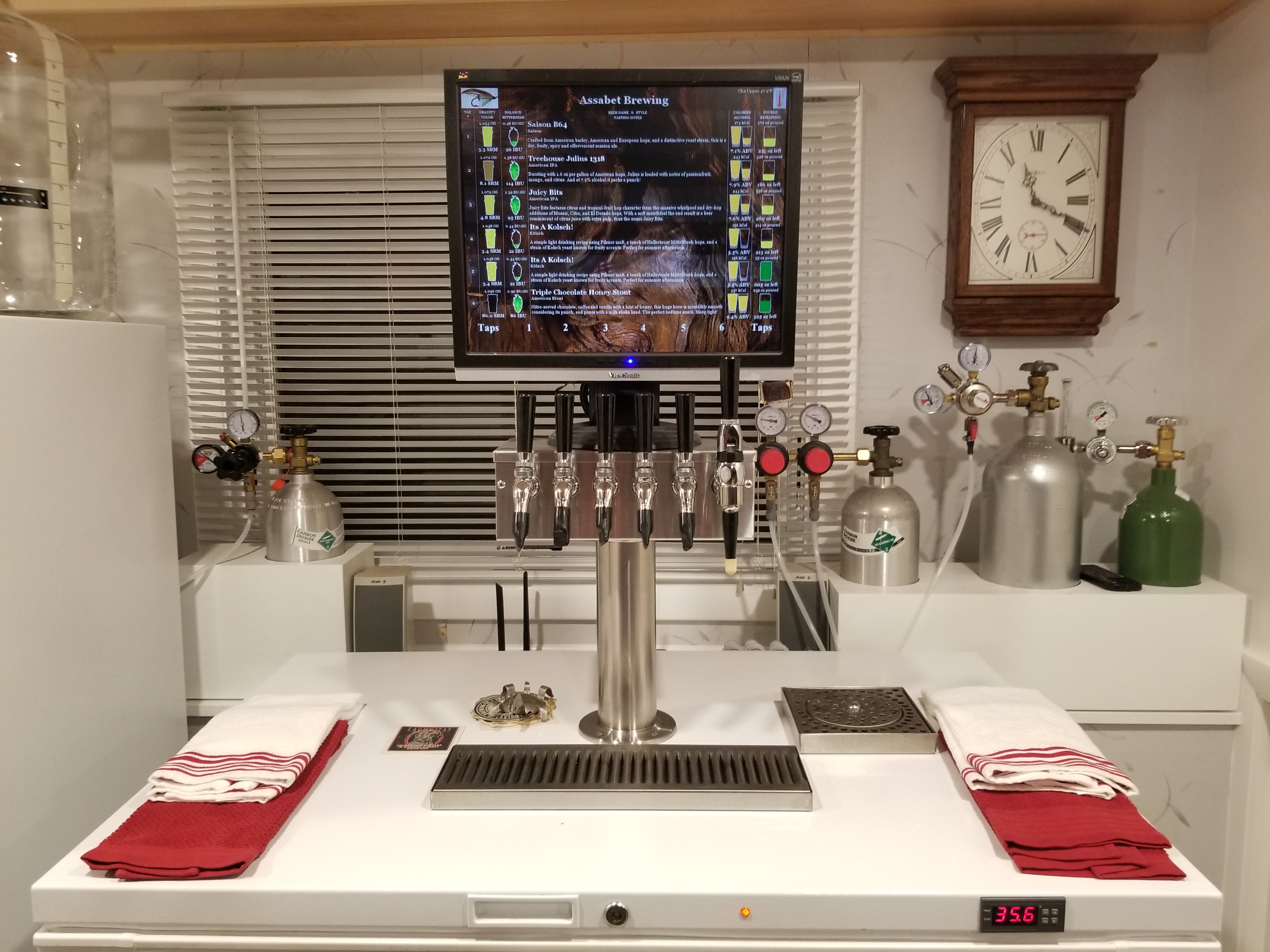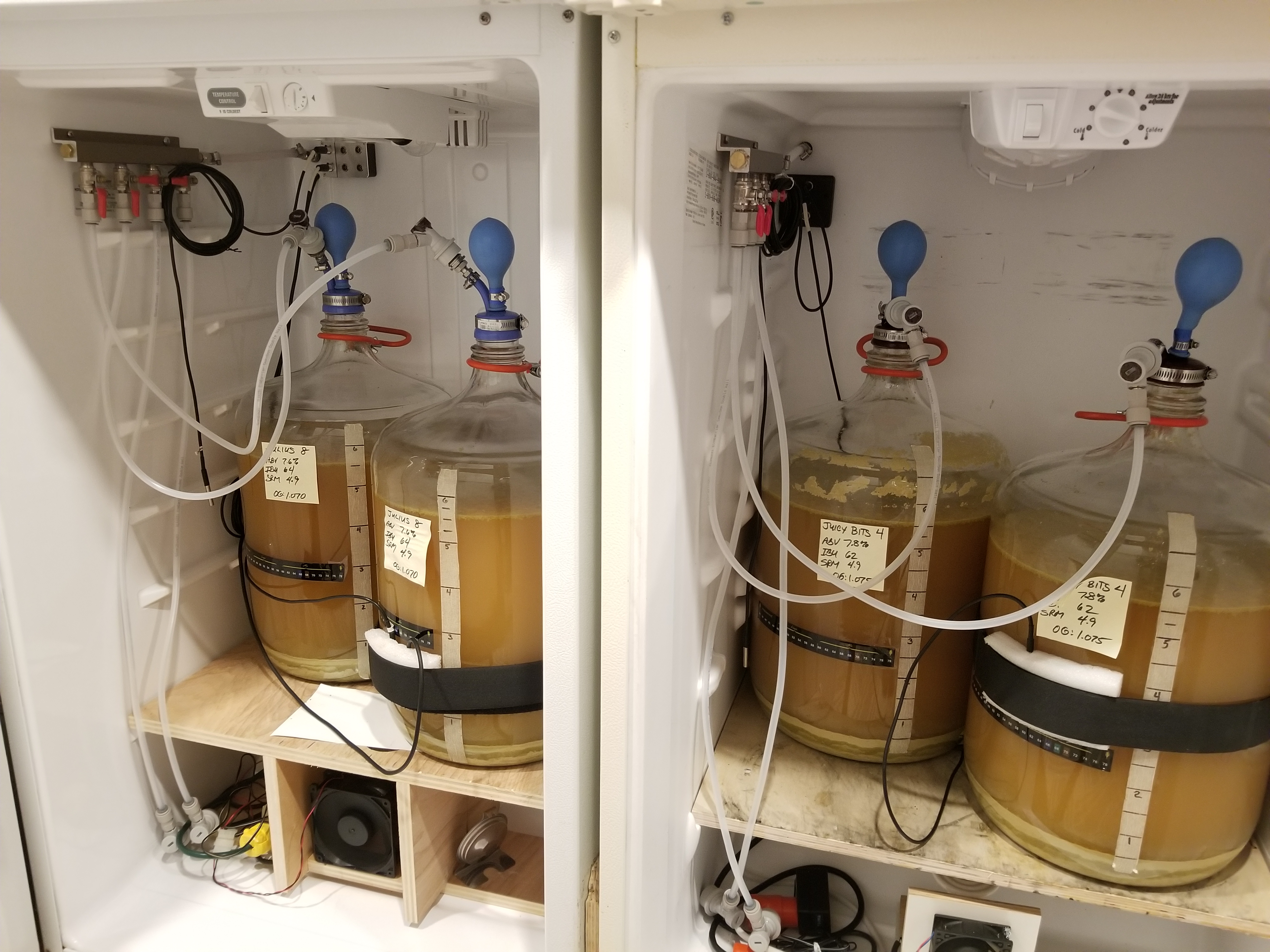Did you notice the flow meters atop six of the kegs in my keezer pic above? They provide the input to make my
RaspberryPints tap list happen:
View attachment 656275
fwiw, I recommend going heavy with the probe insulation. The more the better to isolate the probe from the cabinet temperature. One inch thick foam virtually eliminates coupling to ambient.
It is now

I just recently replaced all of the cold side tubing in my humble brewery with EVAbarrier, both beer (I used 4mm ID for that) and gas (5mm ID there). That's the keezer and three fridges outfitted for both fermentation and cold-conditioning/carbonation up to four kegs each. Sounds like a lot but tubing wise it was only one roll of the 4mm and two rolls of the 5mm.
It was the fittings that were the killer. With six beer runs, 20 gas drops (including beer gas and a high pressure line for my fizzy beers), and the runs from three regulators to the keezer and three other regs to the three fridges I used almost five dozen PTC connectors from John Guest, Duotight and DMfit, to connect QDs, flow meters, beer shanks, regulators, manifolds, etc. Even the new rinser got fitted with a PTC (JG 1/2" BSP to 5/16" OD tubing, fwiw).
But I'll say this: I leaked tested the hell out of every bit and those fittings are the bomb when used with the EVA tubing. I even found (and fixed) a glacially slow regulator PRV thread leak that had probably been there since bought over a decade ago because everything else is holding tight so well.
So I'm pretty pleased so far, and to that extent I'd definitely recommend this tubing system...
Cheers!









